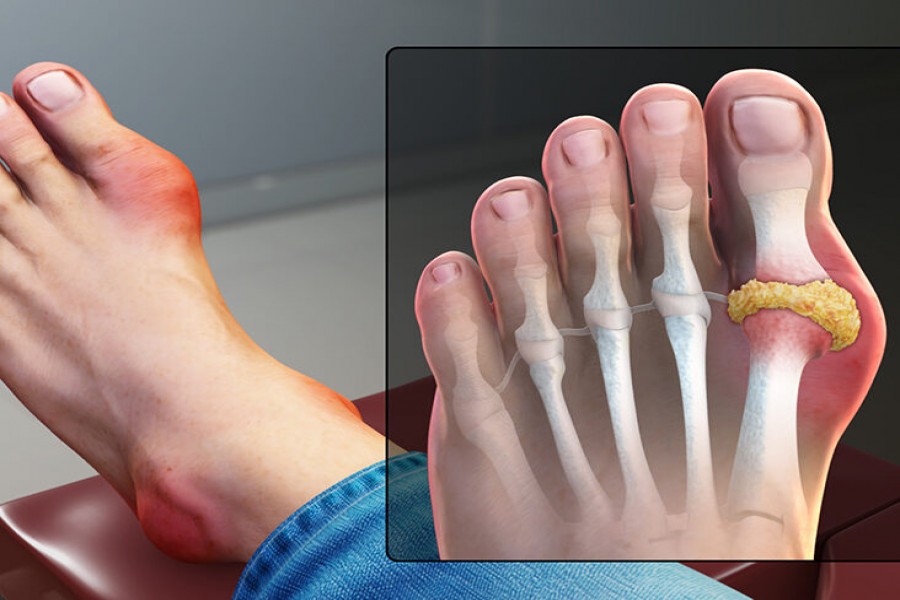Let us recall the experience of British physician Thomas Sydenham who lived in the seventeenth century. He was suffering from gout.
One night, in his own description, he suddenly woke up from sleep with severe pain in the great toe, like it was dislocated. Then came a slight fever with chills and shivers, increasing gradually in intensity. After some time the pain became almost unbearable.
Gout is like that. It will sneak up on us when it’s least expected. Physicians categorise it as a form of arthritis or joint inflammation. Usually, one joint is affected, but sometimes gout can strike two or more joints simultaneously.
The disease never really goes away completely, instead, it goes through flares - a sudden attack of gout pain, and remission when the patient is completely normal. Frequent bouts can lead to a serious form of arthritis.
The commonest joint affected by gout is the big toe. Other common sites include ankles, feet, elbows or knees.
A classical attack is often characterised by the sudden appearance of severe pain, redness, warmth and swelling of the joint. This usually lasts for 12-24 hours, then gradually wanes in intensity. Even without medication, the patient will be relieved of pain completely in 7-14 days. But every second of it will be hellish.
But why does this happen? This is due to excess uric acid accumulation. Our body makes this uric acid from purine found in food and drink, and then throws it out via urine.
In gout, either the production exceeds the excretion capacity or the mechanism to excrete it is defective. The consequence is uric acid crystals loading up in joints, causing pain.
Certain people have a higher likelihood of suffering from gout. Eating a diet rich in purines, e.g. red meat, sardines, scallops, trout, tuna etc. is not ideal, since it can increase production.
Male sex, obesity, diseases like diabetes, hypertension, kidney problems, and heart issues all can increase the risk. Medications, e.g. diuretics, and drinking too much alcohol are also known risk factors for gout.
If gout is suspected, a physician must be consulted immediately. Only a physician can diagnose the disease and offer guidance on how to control it. The physician may prescribe certain medications, including pain relievers which must be taken according to the instructions. Indiscriminately consuming pain medications is not a solution and will create more problems.
Apart from medications, we can take some additional measures for alleviating the pain. Pressing an ice pack against the joint sometimes helps. This can be done for 10-20 minutes at a time throughout the day.
Elevating the joint during this time is also recommended. If it is the big toe, we can always use a pillow to prop it up. If the patient needs to walk during this time, it is better to use a cane to avoid putting pressure on the affected joint.
There are some lifestyle modifications the patients can make to manage their conditions. Limiting high purine diets and eating a health balanced meal will offer some protection against frequent attacks.
Exercise helps too, but only those which do not put too much stress on the joints. Swimming, cycling or walking are good examples. The duration should be at least 2.5 hours in total every week.
Drinking plenty of water is highly advisable, as this can help flush the uric acid from the body. Eight glasses every day is the aim. In addition, sugary drinks, alcohol must be restricted or avoided entirely.
Maintaining a healthy weight is always good. This will help reduce pain, enhance function and can slow down the disease progression.


